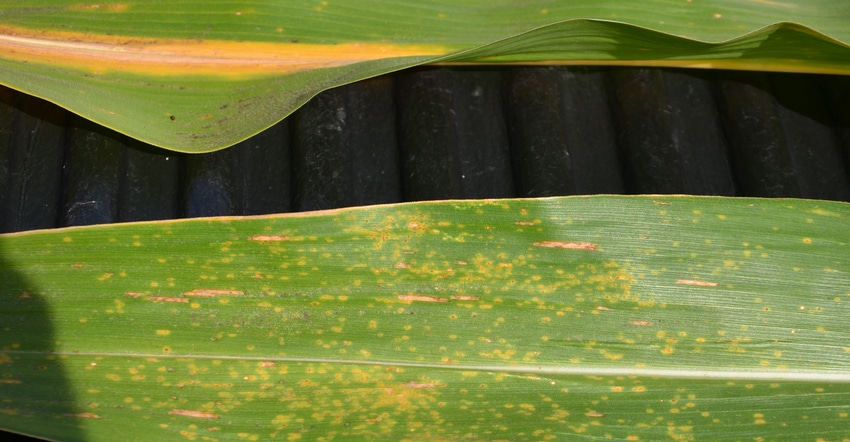
Producing top corn yields requires good growing conditions and keeping plants healthy through grain fill. Dave Nanda says the secret to keeping grain fill moving in a positive direction is keeping ear leaves healthy. The ear leaf is the large leaf that attaches to the node where the main ear also attaches.
Think of the ear leaf as the bellwether for the plant, says Nanda, director of genetics for Seed Genetics-Direct, Jeffersonville, Ohio. Seed Genetics-Direct sponsors Corn Watch ’19. As health of the ear leaf goes, so goes grain fill.
“It’s an extremely important leaf when it comes to photosynthesis, capturing solar energy and turning it into sugars, starches and eventually yield,” Nanda says. “That’s why we become concerned during the season if disease lesions threaten the ear leaf.”
In the Corn Watch ’19 field, ear leaves stayed clean, for the most part, until just before black layer. It’s common for diseases and nutrient deficiencies to show up on some plants as black layer approaches and plants begin shutting down, Nanda says. Black layer signals that the ear is physiologically mature.
Classic symptoms
Nanda collected several ear leaves very late in the season, at the end of September, just before black layer. By this time, some showed classic disease and deficiency symptoms. “At this point, you just want black layer to occur and ears to dry down,” Nanda says. “But it’s a good time to study classic symptoms of diseases and deficiencies so you know what they look like in the future.”
Here are three examples based on the picture above:
Nitrogen deficiency. The Purdue Corn and Soybean Field Guide illustrates that nitrogen deficiency on corn leaves generally begins as yellowing at the tip of the leaf, which then moves back toward the stalk along the midrib of the plant (see top leaf in photo). Over time, leaf tissue may turn brown and die. If you see these symptoms earlier in the season, say in August early in grain fill, it indicates plants are running out of nitrogen too soon. Yield would likely be affected in that case.
Gray leaf spot. Look for the small, rectangular lesions on the lower leaf in the picture. These are caused by gray leaf spot, a fungal leaf disease. The Purdue guide describes them as varying in color from pale brown to tan to gray. This fungus survives in corn residue. Spores produced in the spring infect new corn leaves. Warm, humid weather favors the disease.
Rust. Nanda suspects the lower leaf also is exhibiting common rust, although it’s difficult to distinguish between common rust and southern rust without close examination and use of diagnostic tools. Southern rust caused considerable yield loss in 2016 in southern Indiana, Ohio and Illinois. It was present this year, found as far north as Lafayette, Ind. However, timing and much drier conditions limited severity. Neither common rust nor southern rust fungi overwinter here. Both blow in from southern regions in spring and summer.
About the Author(s)
You May Also Like




